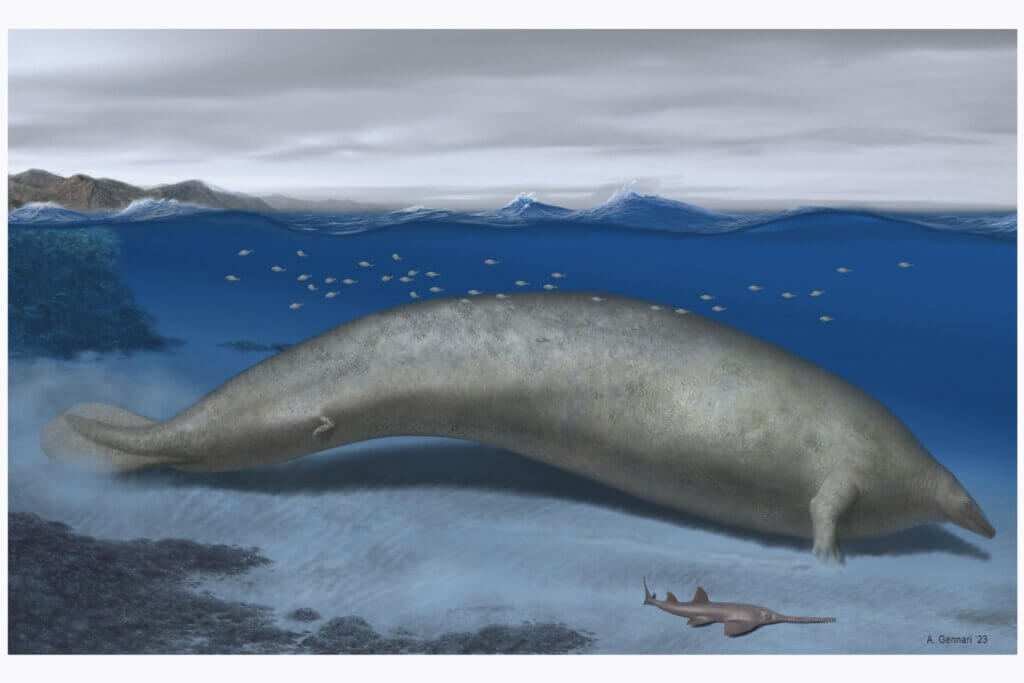Lima, Peru — Scientists have unearthed a colossal fossil specimen in Peru, shedding light on a remarkable species known as Perucetus colossus, or the “colossal whale from Peru.”
This ancestral predecessor of the blue whale, which thrived around 39 million years ago, could have been the heaviest animal to have roamed the planet.
For many years, the blue whale (Balaenoptera musculus) held the title of the largest and heaviest creature to have ever existed, having been recorded by the Guinness Book of World Records with a weight of 190 tons. However, all of this could change with the discovery of this new marine mammal.
The groundbreaking finding, unveiled in the August 2 edition of the journal Nature, was the result of a collaborative effort involving Peruvian and European researchers, including paleontologist Dr. Rodolfo Salas-Gismondi, a faculty member at the Universidad Peruana Cayetano Heredia.
Dr. Salas-Gismondi told Peru Reports that the Perucetus colossus was an immense mammal, specifically categorized as a “basilosaurid,” an extinct family of cetaceans, which are carnivorous water mammals. This animal reached a length of about 20 meters and could weigh between 85 to 340 tons, “more than any dinosaur or the blue whale,” he said.

“Only 12 vertebrae and four ribs have been identified, yet its distinctiveness from any known creature warranted its publication in the world’s foremost scientific journal. Its bones were remarkably dense and compact, with each vertebra weighing nearly 200 kg. The collection process spanned over a decade,” the scientist said.
Dr. Salas-Gismondi further revealed that the animal’s skull remains a mystery, leaving its dietary habits and other behaviors unknown, making it one of the most enigmatic creatures of the past to have been discovered.
The ball started rolling in 2013 when paleontologist Mario Urbina stumbled upon the whale’s remains during a trek across the Ica desert in northern Peru. The fossil appeared more like a stone, which led to initial skepticism among researchers. The process of collecting and analyzing the fossilized remains took several years.
“They thought I had made a mistake. They interpreted it as a stone rather than a mammal bone, as there are no precedents for mammals of this size in the Cenozoic fossil record (which covers the last 66 million years since the extinction of dinosaurs),” Urbina said in an interview with La República.
“It’s like discovering the fossil of Godzilla,” he added.
Over the course of roughly a decade, subsequent studies unfolded, employing cutting-edge methods such as three-dimensional modeling using laser scanning technology on each of the recovered bones.
Nowadays, the whereabouts of the remaining bones remain unknown, but excavation efforts are actively underway.










